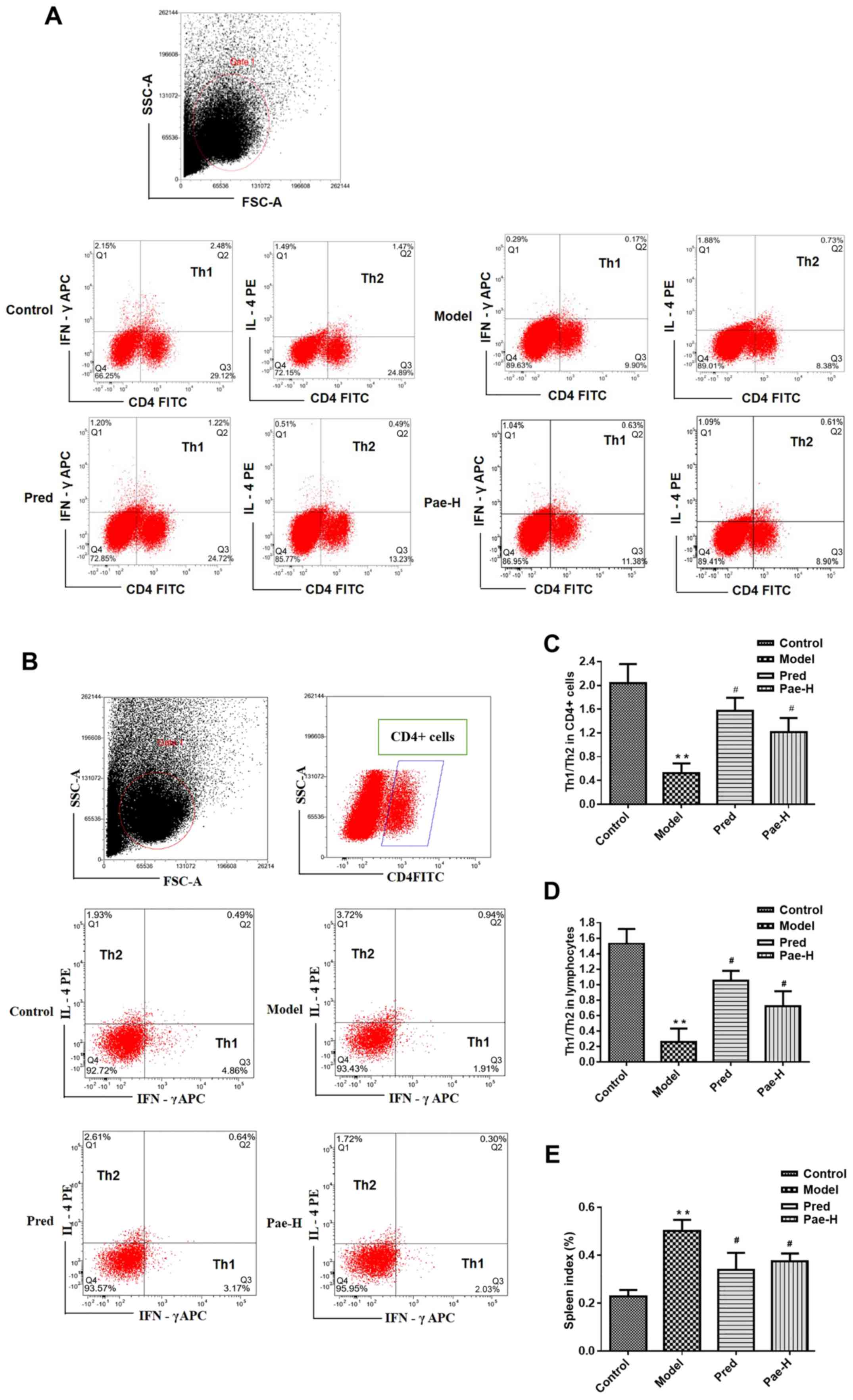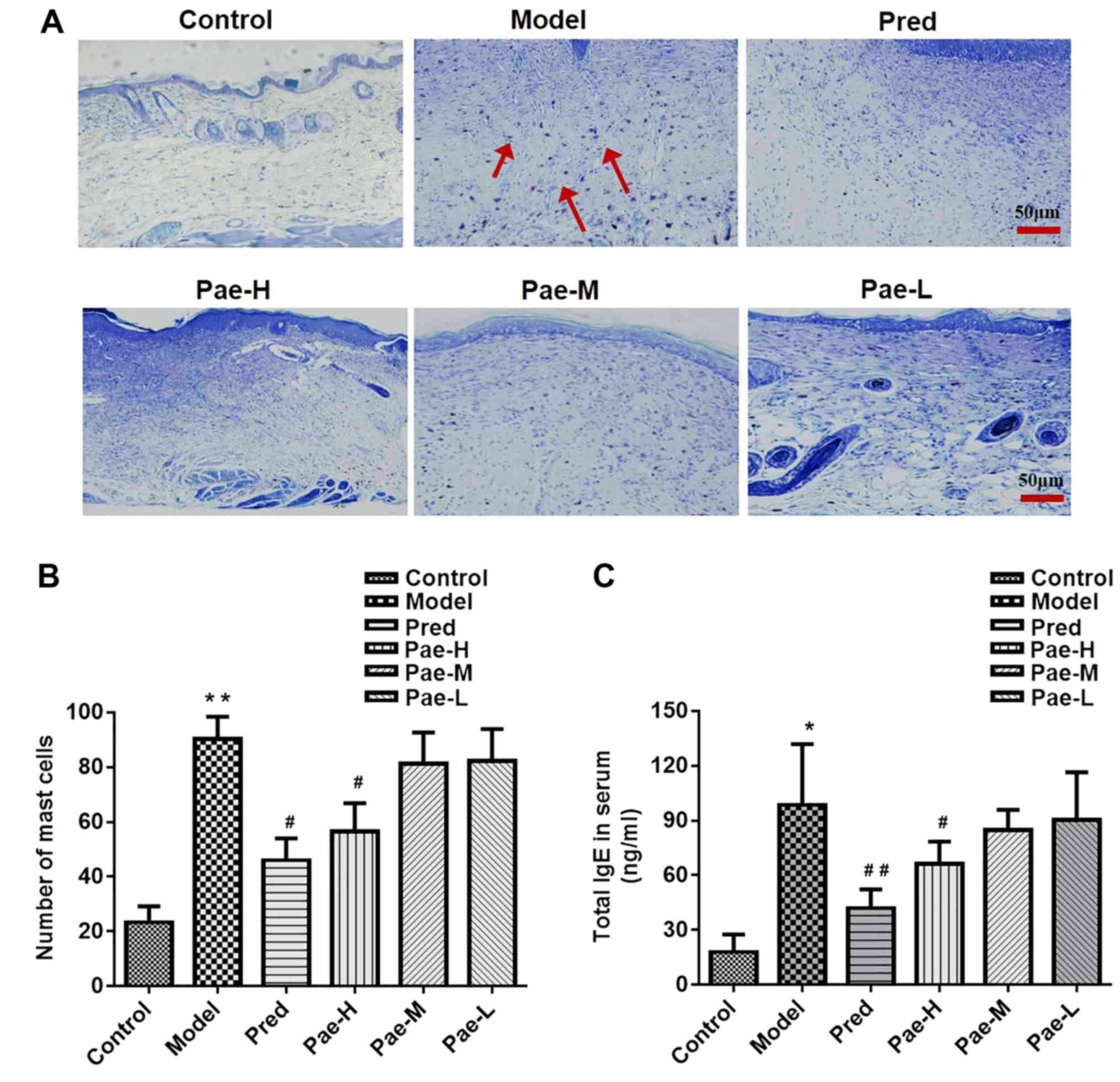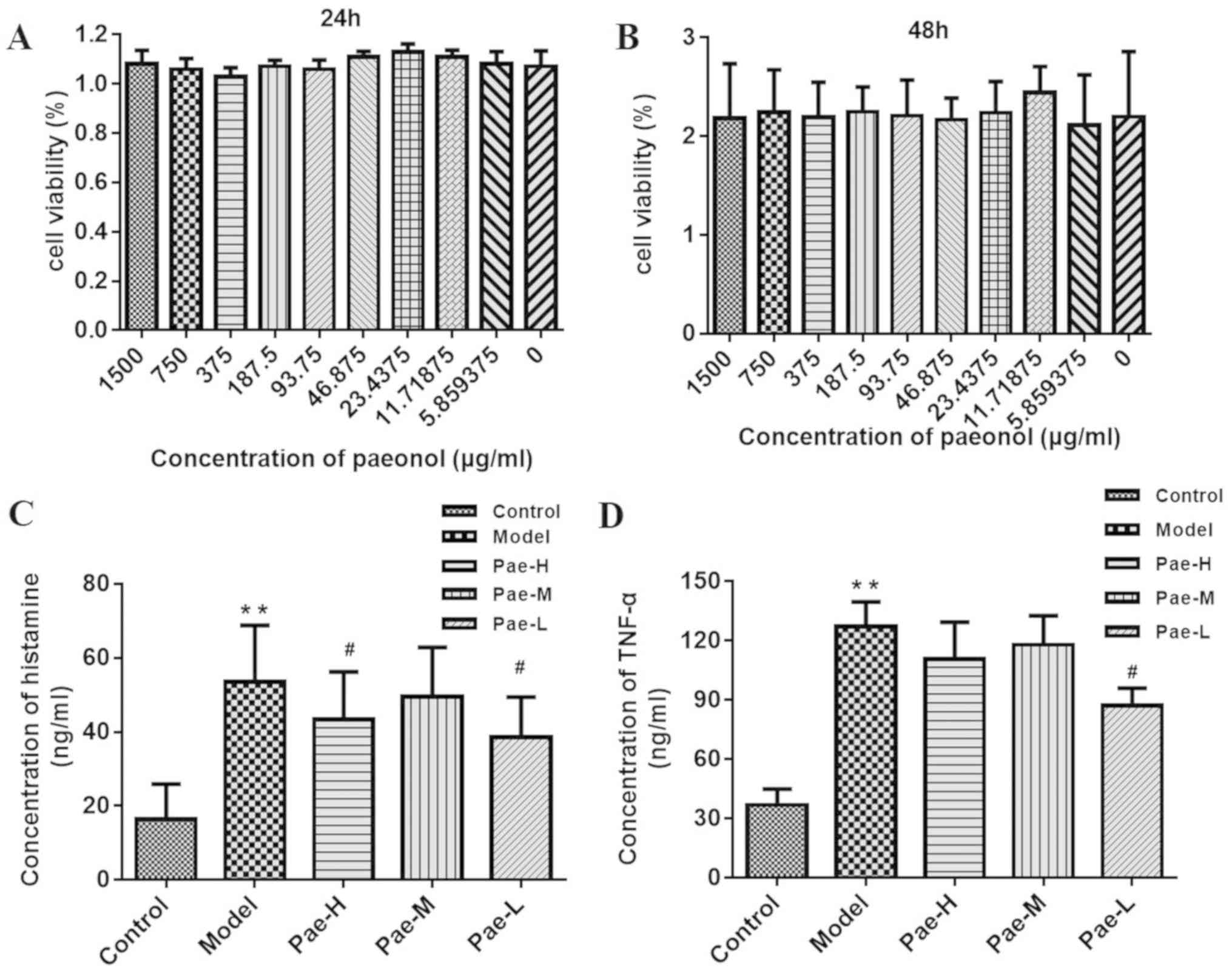|
1
|
Sidbury R and Khorsand K: Evolving
concepts in atopic dermatitis. Curr Allergy Asthma Rep. 17:422017.
View Article : Google Scholar : PubMed/NCBI
|
|
2
|
Griffiths CE, van de Kerkhof P and
Czarnecka-Operacz M: Psoriasis and atopic dermatitis. Dermatol Ther
(Heidelb). 7:31–41. 2017. View Article : Google Scholar : PubMed/NCBI
|
|
3
|
Genuneit J, Seibold AM, Apfelbacher CJ,
Konstantinou GN, Koplin JJ, La Grutta S, Logan K, Perkin MR, Flohr
C and Task Force ‘Overview of Systematic Reviews in Allergy
Epidemiology (OSRAE)’ of the EAACI Interest Group on Epidemiology:
Overview of systematic reviews in allergy epidemiology. Allergy.
72:849–856. 2017. View Article : Google Scholar : PubMed/NCBI
|
|
4
|
Guttman-Yassky E, Krueger JG and Lebwohl
MG: Systemic immune mechanisms in atopic dermatitis and psoriasis
with implications for treatment. Exp Dermatol. 27:409–417. 2018.
View Article : Google Scholar : PubMed/NCBI
|
|
5
|
Hello M, Aubert H, Bernier C, Néel A and
Barbarot S: Atopic dermatitis of the adult. Rev Med Interne.
37:91–99. 2016. View Article : Google Scholar : PubMed/NCBI
|
|
6
|
Liour SS, Tom A, Chan YH and Chang TW:
Treating IgE-mediated diseases via targeting IgE-expressing B cells
using an anti-CεmX antibody. Pediatr Allergy Immunol. 27:446–451.
2016. View Article : Google Scholar : PubMed/NCBI
|
|
7
|
Stokes J: Anti-IgE Treatment for disorders
other than asthma. Front Med (Lausanne). 4:1522017. View Article : Google Scholar : PubMed/NCBI
|
|
8
|
De Kouchkovsky DA, Ghosh S and Rothlin CV:
Negative regulation of type 2 Immunity. Trends Immunol. 38:154–167.
2017. View Article : Google Scholar : PubMed/NCBI
|
|
9
|
Osinka K, Dumycz K, Kwiek B and Feleszko
W: Novel therapeutic approaches to atopic dermatitis. Arch Immunol
Ther Exp (Warsz). 66:171–181. 2018. View Article : Google Scholar : PubMed/NCBI
|
|
10
|
Saluja R, Khan M, Church M and Maurer M:
The role of IL-33 and mast cells in allergy and inflammation. Clin
Transl Allergy. 5:332015. View Article : Google Scholar : PubMed/NCBI
|
|
11
|
Malik K, Heitmiller KD and Czarnowicki T:
An update on the pathophysiology of atopic dermatitis. Dermatol
Clin. 35:317–326. 2017. View Article : Google Scholar : PubMed/NCBI
|
|
12
|
Jin X, Wang J, Xia ZM, Shang CH, Chao QL,
Liu YR, Fan HY, Chen DQ, Qiu F and Zhao F: Antiinflammatory and
anti-oxidative activities of paeonol and its metabolites through
blocking MAPK/ERK/p38 signaling pathway. Inflammation.
39:4344462016. View Article : Google Scholar
|
|
13
|
Liu CM, Yang HX, Ma JQ, Yang W, Feng ZJ,
Sun JM, Cheng C, Li J and Jiang H: Role of AMPK pathway in
lead-induced endoplasmic reticulum stress in kidney and in
paeonol-induced protection in mice. Food Chem Toxicol Oct.
122:87–94. 2018. View Article : Google Scholar
|
|
14
|
Choy KW, Mustafa MR, Lau YS, Liu J,
Murugan D, Lau CW, Wang L, Zhao L and Huang Y: Paeonol protects
against endoplasmic reticulum stress-induced endothelial
dysfunction via AMPK/PPAR delta signaling pathway. Biochem
Pharmacol. 116:51–62. 2016. View Article : Google Scholar : PubMed/NCBI
|
|
15
|
Liu MH, Lin AH, Lee HF, Ko HK, Lee TS and
Kou YR: Paeonol attenuates cigarette smoke-induced lung
inflammation by inhibiting ROS-sensitive inflammatory signaling.
Mediators Inflamm. 2014:6518902014. View Article : Google Scholar : PubMed/NCBI
|
|
16
|
Meng Y, Wang M, Xie X, Di T, Zhao J, Lin
Y, Xu X, Li N, Zhai Y, Wang Y and Li P: Paeonol ameliorates
imiquimod-induced psoriasis-like skin lesions in BALB/c mice by
inhibiting the maturation and activation of dendritic cells. Int J
Mol Med. 39:1101–1110. 2017. View Article : Google Scholar : PubMed/NCBI
|
|
17
|
Choi JH, Kim HG, Jin SW, Han EH, Khanal T,
Do MT, Hwang YP, Choi JM, Chun SS, Chung YC, et al: Topical
application of Pleurotus eryngii extracts inhibits
2,4-dinitrochlorobenzene-induced atopic dermatitis in NC/Nga mice
by the regulation of Th1/Th2 balance. Food Chem Toxicol. 53:38–45.
2013. View Article : Google Scholar : PubMed/NCBI
|
|
18
|
Charlton E: Committee on ethical issues of
the international association for the study of pain. Pain.
63:277–278. 1995. View Article : Google Scholar : PubMed/NCBI
|
|
19
|
Livak KJ and Schmittgen TD: Analysis of
relative gene expression data using real-time quantitative PCR and
the 2(-Delta Delta C(T)) method. Methods. 25:402–408. 2001.
View Article : Google Scholar : PubMed/NCBI
|
|
20
|
Liu M, Zhong S, Kong R, Shao H, Wang C,
Piao H, Lv W, Chu X and Zhao Y: Paeonol alleviates
interleukin-1beta-induced inflammatory responses in chondrocytes
during osteoarthritis. Biomed Pharmacother. 95:914–921. 2017.
View Article : Google Scholar : PubMed/NCBI
|
|
21
|
Kim JH, Seo CS and Shin HK: Development of
validated determination of the eleven marker compounds in
Gyejibokryeong-hwan for the quality assessment using HPLC analysis.
Arch Pharm Res. 38:52–62. 2015. View Article : Google Scholar : PubMed/NCBI
|
|
22
|
Zhu TH, Cao SW and Yu YY: Synthesis,
characterization and biological evaluation of paeonol
thiosemicarbazone analogues as mushroom tyrosinase inhibitors. Int
J Biol Macromol. 62:589–595. 2013. View Article : Google Scholar : PubMed/NCBI
|
|
23
|
Scheerer C and Eyerich K: Pathogenesis of
atopic dermatitis. Hautarzt. 69:191–196. 2018. View Article : Google Scholar : PubMed/NCBI
|
|
24
|
Köberle M and Biedermann T: Microbiome,
atopic eczema and blockade of type 2 immunity. Hautarzt.
69:197–203. 2018. View Article : Google Scholar : PubMed/NCBI
|
|
25
|
Soumelis V: Molecular and cellular
discoveries in inflammatory dermatoses. J Eur Acad Dermatol
Venereol. 31:3–7. 2017. View Article : Google Scholar : PubMed/NCBI
|
|
26
|
Hashimoto Y, Arai I, Nakanishi Y, Sakurai
T, Nakamura A and Nakaike S: Scratching of their skin by NC/Nga
mice leads to development of dermatitis. Life Sci. 76:783–794.
2004. View Article : Google Scholar : PubMed/NCBI
|
|
27
|
Eyerich K and Novak N: Immunology of
atopic eczema: Overcoming the Th1/Th2 paradigm. Allergy.
68:974–982. 2013. View Article : Google Scholar : PubMed/NCBI
|
|
28
|
Manti S, Chimenz R, Salpietro A, Colavita
L, Pennisi P, Pidone C, Sturiale M, Arrigo T, Miraglia Del Giudice
M, Salpietro C and Cuppari C: Atopic Dermatitis: Expression of
Immunological Imbalance. J Biol Regul Homeost Agents. 29:13–7.
2015.PubMed/NCBI
|
|
29
|
Lawrence MG, Steinke JW and Borish L:
Cytokine-targeting biologics for allergic diseases. Ann Allergy
Asthma Immunol. 120:376–381. 2018. View Article : Google Scholar : PubMed/NCBI
|
|
30
|
Lee DE, Clark AK, Tran KA and Shi VY: New
and emerging targeted systemic therapies: A new era for atopic
dermatitis. J Dermatolog Treat. 29:364–374. 2018. View Article : Google Scholar : PubMed/NCBI
|
|
31
|
Mc Cormick SM and Heller NM: Commentary:
IL-4 and IL-13 receptors and signaling. Cytokine. 75:38–50. 2015.
View Article : Google Scholar : PubMed/NCBI
|
|
32
|
Hurdayal R and Brombacher F: The role of
IL-4 and IL-13 in cutaneous Leishmaniasis. Immunol Lett.
16:179–183. 2014. View Article : Google Scholar
|
|
33
|
Di Lernia V: Therapeutic strategies in
extrinsic atopic dermatitis: Focus on inhibition of IL-4 as a new
pharmacological approach. Expert Opin Ther Targets. 19:87–96. 2015.
View Article : Google Scholar : PubMed/NCBI
|
|
34
|
Danso MO, van Drongelen V, Mulder A, van
Esch J, Scott H, van Smeden J, El Ghalbzouri A and Bouwstra JA:
TNF-alpha and Th2 cytokines induce atopic dermatitis-like features
on epidermal differentiation proteins and stratum corneum lipids in
human skin equivalents. J Invest Dermatol. 134:1941–1950. 2014.
View Article : Google Scholar : PubMed/NCBI
|
|
35
|
Nygaard U, Hvid M, Johansen C, Buchner M,
Fölster-Holst R, Deleuran M and Vestergaard C: TSLP, IL-31, IL-33
and sST2 are new biomarkers in endophenotypic profiling of adult
and childhood atopic dermatitis. J Eur Acad Dermatol Venereol.
30:1930–1938. 2016.PubMed/NCBI
|
|
36
|
Han H, Roan F and Ziegler SF: The atopic
march: Current insights into skin barrier dysfunction and
epithelial cell-derived cytokines. Immunol Rev. 278:116–130. 2017.
View Article : Google Scholar : PubMed/NCBI
|
|
37
|
Cianferoni A and Spergel J: The importance
of TSLP in allergic disease and its role as a potential therapeutic
target. Expert Rev Clin Immunol. 10:1463–1474. 2014. View Article : Google Scholar : PubMed/NCBI
|
|
38
|
Bağci IS and Ruzicka T: IL-31: A new key
player in dermatology and beyond. J Allergy Clin Immunol.
141:858–866. 2018. View Article : Google Scholar : PubMed/NCBI
|
|
39
|
Otsuka A, Nomura T, Rerknimitr P, Seidel
JA, Honda T and Kabashima K: The interplay between genetic and
environmental factors in the pathogenesis of atopic dermatitis.
Immunol Rev. 278:246–262. 2017. View Article : Google Scholar : PubMed/NCBI
|
|
40
|
Silvestre MC, Sato MN and Reis VMSD:
Innate immunity and effector and regulatory mechanisms involved in
allergic contact dermatitis. An Bras Dermatol. 93:242–250. 2018.
View Article : Google Scholar : PubMed/NCBI
|
|
41
|
Campana R, Dzoro S, Mittermann I, Fedenko
E, Elisyutina O, Khaitov M, Karaulov A and Valenta R: Molecular
aspects of allergens in atopic dermatitis. Curr Opin Allergy Clin
Immunol. 17:269–277. 2017. View Article : Google Scholar : PubMed/NCBI
|
|
42
|
Korošec P, Gibbs BF, Rijavec M, Custovic A
and Turner PJ: Important and specific role for basophils in acute
allergic reactions. Clin Exp Allergy. 48:502–512. 2018. View Article : Google Scholar : PubMed/NCBI
|
|
43
|
Mukai K, Tsai M, Saito H and Galli SJ:
Mast cells as sources of cytokines, chemokines, and growth factors.
Immunol Rev. 282:121–150. 2018. View Article : Google Scholar : PubMed/NCBI
|
|
44
|
Kawakami T, Kashiwakura J and Kawakami Y:
Histamine-releasing factor and immunoglobulins in asthma and
allergy. Allergy Asthma Immunol Res. 6:6–12. 2014. View Article : Google Scholar : PubMed/NCBI
|
|
45
|
Patterson H, Nibbs R, McInnes I and
Siebert S: Protein kinase inhibitors in the treatment of
inflammatory and autoimmune diseases. Clin Exp Immunol. 176:1–10.
2014. View Article : Google Scholar : PubMed/NCBI
|

















